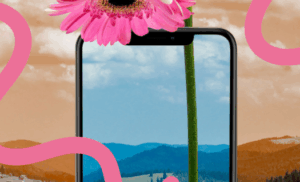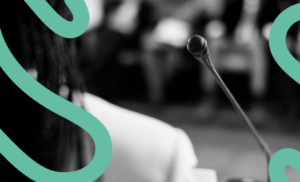Have you ever thought about…?
And if we change this…?
From these types of questions of imagination and disruptive innovation, enormous changes are born for everyone. Changes that impact, through the brand, all areas and dimensions of the organization.
The world of branding works to find new spaces that generate value. Spaces that should normally be based on current beliefs in the market. That is one of the main challenges of branding: to help people see things in a new way. How? Connecting the essence of our brand with the culture.
It is true that the consumer has become resistant, and even immune, to all types of advertising. So it’s logical to want to make an impact: from being different to becoming the center of attention.
Breaking with convention and achieving change
Disruptive marketing can challenge conventional thinking in an already consolidated market, as well as in the development of new commercial spaces. The way to identify unusual opportunities is based on observation.
Before launching the campaign, brand guidelines and messages must be configured to be consistent with what you want to communicate. After that, it is advisable to collect data and metrics derived from the same process in order to know the real effectiveness of the strategy. Depending on the results obtained, it is possible to modify it and it will also serve to follow a line of work for future campaigns aimed at promoting those aspects that have worked best with the public. The key is always to “keep surprising and not become predictable”.
Let’s think that, for a good disruptive marketing strategy, it is necessary to know well what the company’s mission is. It should not be forgotten that creativity is an essential part of the tactic, as the aim is to surprise customers while taking significant risks.
For a good disruptive marketing strategy, it is necessary to know well what the company’s mission is. It should not be forgotten that creativity is an essential part of the tactic, as the aim is to surprise customers while taking significant risks.
Disruptive campaigns of the most daring brands
1. Yoigo: “Calling is cool”.
Yoigo’s new ad claims the fact of making a phone call by recalling how cinema is full of historical phone calls.
With the slogan. “Calling is cool! it wants to convey the idea that a call is always better than an emoticon or a text message, warning that this historical method of communication is less and less used, even among the elderly.
Throughout the minute and a half long version of the ad, a comparison is made between the past and the present. The company wants to alert of an emergency situation: it is better to type the number to communicate it quickly rather than send a message without knowing when it will be read.
With these scenes, Yoigo aims to motivate users to communicate as they did a few (and not so many) years ago, and not through a text message. In the ad, they insist on the need to return to the spontaneity and emotion of the past, when people would pick up the phone to connect with a loved one. This is something that, unfortunately, has passed away.
2. Citroën: C4 Cactus, “Unique for your family”.
Boldness and injustification in advertising have been part of Citroën since the beginning of the last century. The automaker’s advertising campaigns are marked by boldness, playfulness and non-industry-standard approaches.
One of the most striking phases of these ads, beyond the creative, occurred between the 1960s and 1980s, when Citroën highlighted the attributes of the iconic 2CV in the most exotic way possible.
Citroën’s new campaign for its C4 model, with its new concept “Unique for your family”, aims to highlight the family aspect of the model, but also highlights the love relationship between consumers and their closest ties.
The campaign seeks to convey a message that brings together all the originality that only Citroën has. The video connects this universe with one of its main products, conveying the accessible tone of the brand that believes in the coexistence of love between people and their relationships.
In conclusion, disruptive marketing breaks the paradigms of traditional marketing. It also plays with consumer psychology, with knowledge and with the relationship with customers to end up offering differential advertising.










